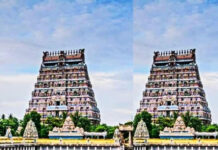
Every time I talk about Vedanta, I am accused of rejecting the subtle philosophical differences created by the internal contradictions or internal debates of Hinduism by presenting Vedanta as the premier philosophical vision of India. I continue to provide explanations about it.
Personally, I am against any kind of monolithicism. My opinion is that monolithism is against creativity and the spontaneous expansion of human knowledge. Human knowledge has the nature of growing like a tree branching and blossoming into leaves. I am against any activity that turns it into a monolithic pillar. Therefore, I do not wish to forcefully align all ideas with Vedanta. I only want to emphasize the great contribution that Vedanta has in interconnecting other Indian philosophies. I try to present the coherence that Vedanta creates among those visions.
Vedanta is not a vision that denies others and presents itself as the only one for humanity. It is only a unifying vision. It does not achieve that unification by blurring all the characteristics of other philosophies and hiding the specificities. Rather, it seeks to identify each specificity and develop it. As a result, Vedanta makes a new form of itself possible within each system of worship. Vishishtadvaita is the result of Vedanta’s penetration into the system of worship called Vaishnavism. Saiva ideology is the penetration of Vedanta into the ancient system of worship called Saivism.
There, Vedanta does not destroy any of the specificities of Saivism. On the contrary, it gives the form of Shiva a more magnificent cosmic form. It creates an abstract concept of Shiva (Aruvuru) from the deity Shiva. Advaita influences Saiva ideology to establish a trinity consisting of the cow, husband, and love. Through this, Vedanta leads to the formation of Saiva Siddhanta as a unique and complete system of thought that does not even need to be dependent on Vedanta.
Only Buddhism and Vedanta, in the realm of ancient wisdom, possess a magical touch that can nurture everything they encounter. We can assume that philosophic visions have two faces—fire and water. The nature of fire is to burn everything it touches, and only it exists. Water gives life, grows everything, and becomes the essence of all. Vedanta and Yogachara Buddhism have the character of water. I would call them Vrishti, the rain. Vrishti is another form of Vritti, the flourishing. Vedanta is the one that nurtures and makes everything live.











